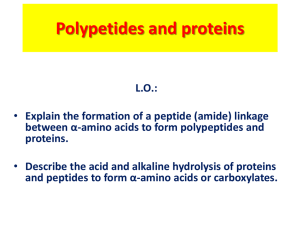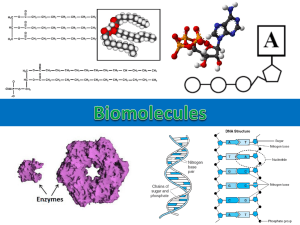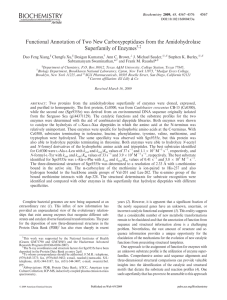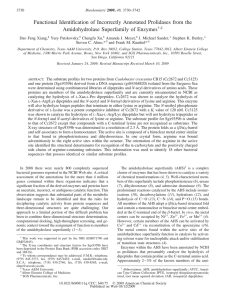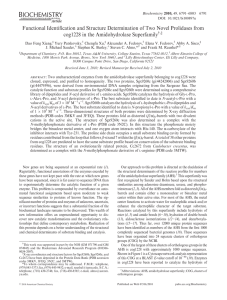l3aminoacids
advertisement
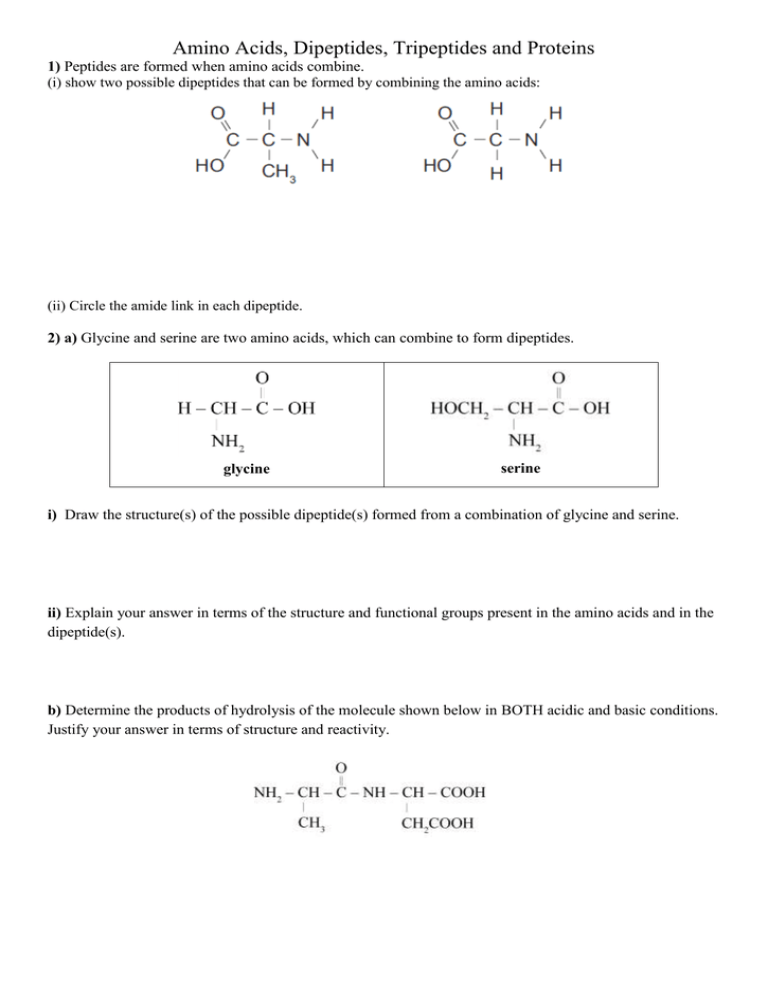
Amino Acids, Dipeptides, Tripeptides and Proteins 1) Peptides are formed when amino acids combine. (i) show two possible dipeptides that can be formed by combining the amino acids: (ii) Circle the amide link in each dipeptide. 2) a) Glycine and serine are two amino acids, which can combine to form dipeptides. glycine serine i) Draw the structure(s) of the possible dipeptide(s) formed from a combination of glycine and serine. ii) Explain your answer in terms of the structure and functional groups present in the amino acids and in the dipeptide(s). b) Determine the products of hydrolysis of the molecule shown below in BOTH acidic and basic conditions. Justify your answer in terms of structure and reactivity. 3) Amino acids are the building blocks that make up proteins. Alanine and valine are amino acids which can combine to form dipeptides. a) Draw the structure of a possible dipeptide formed from the combination of alanine and valine. b) Draw the organic products of the hydrolysis of the dipeptide below using : i) dilute hydrochloric acid solution ii) dilute sodium hydroxide solution. 4) a) Gluthathione (GSH) is one of the most common small peptides in animals, plants and bacteria. i) Draw a circle around one of the amide (peptide) groups. ii) Draw structures of the products of the hydrolysis of this compound using alkaline conditions (NaOH) and compare with the structures of the hydrolysis products under acidic conditions. 5) Compound molecule referred to as dipeptides. undergoes a condensation reaction with the following (commonly referred to as alanine). It forms two different organic products i) Draw the structural formulae for the two possible dipeptides. ii) Explain why the formation of dipeptides is referred to as a ‘condensation reaction’. © 2014 http://www.chemicalminds.wikispaces.com NCEA questions and answers reproduced with permission from NZQA
